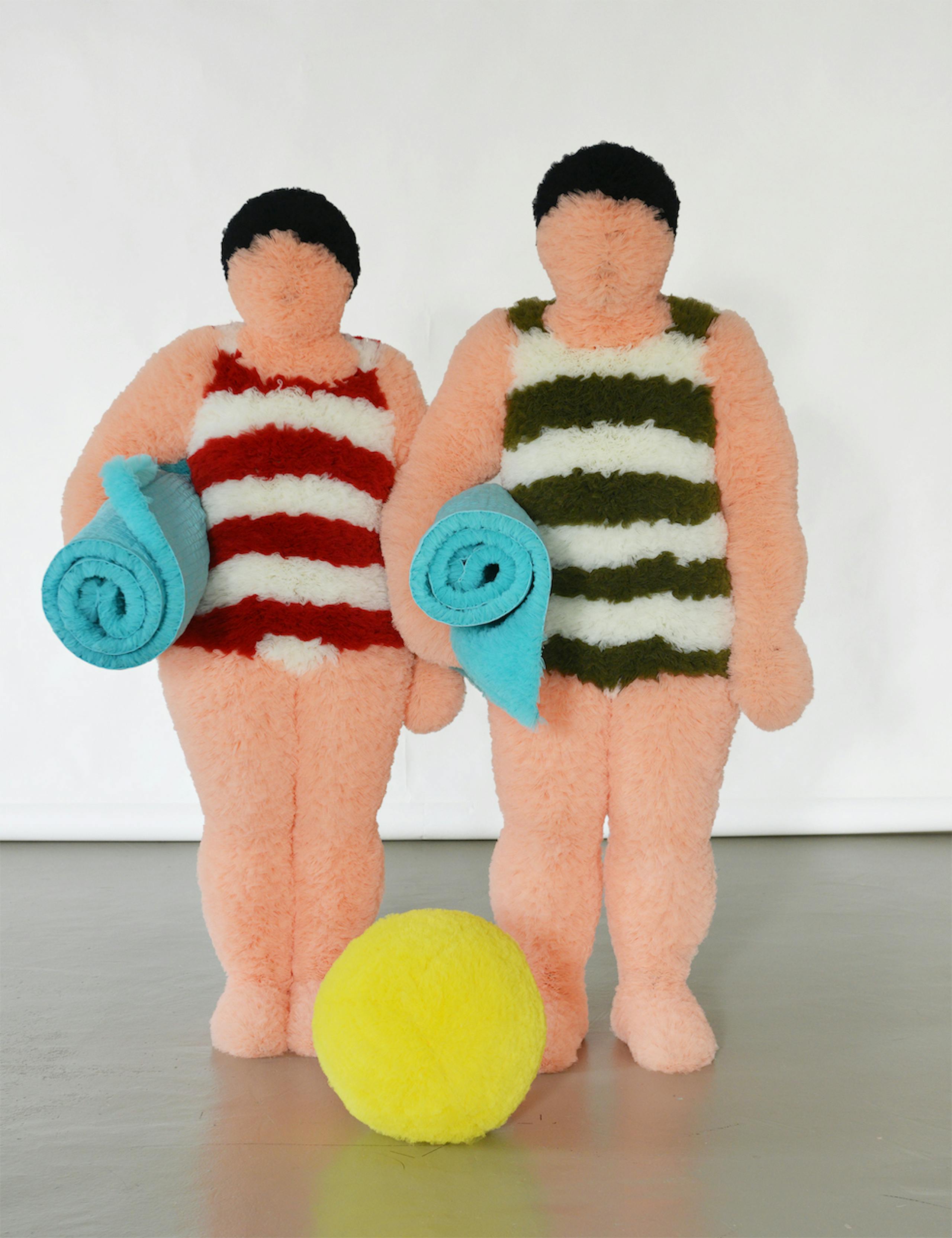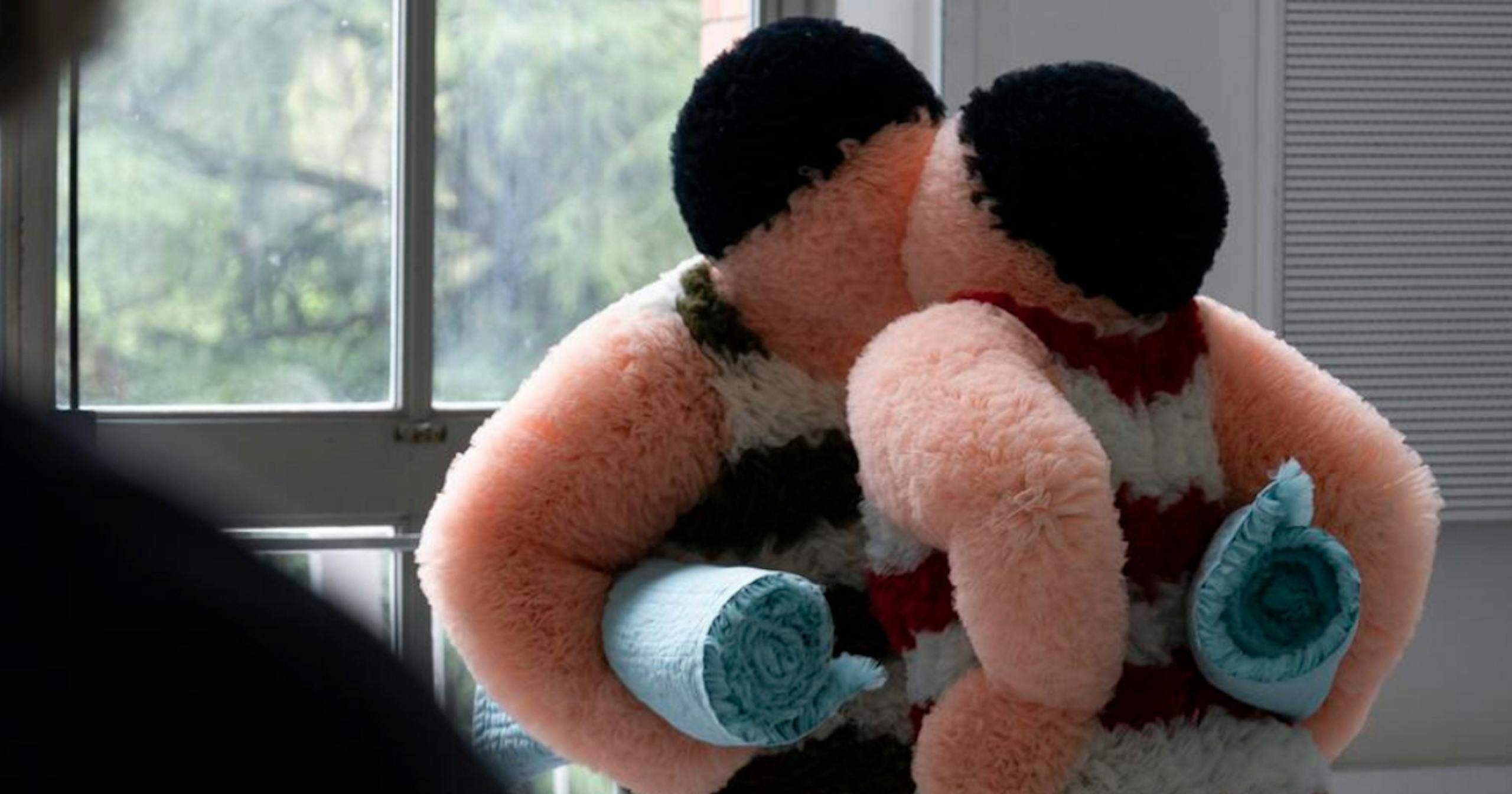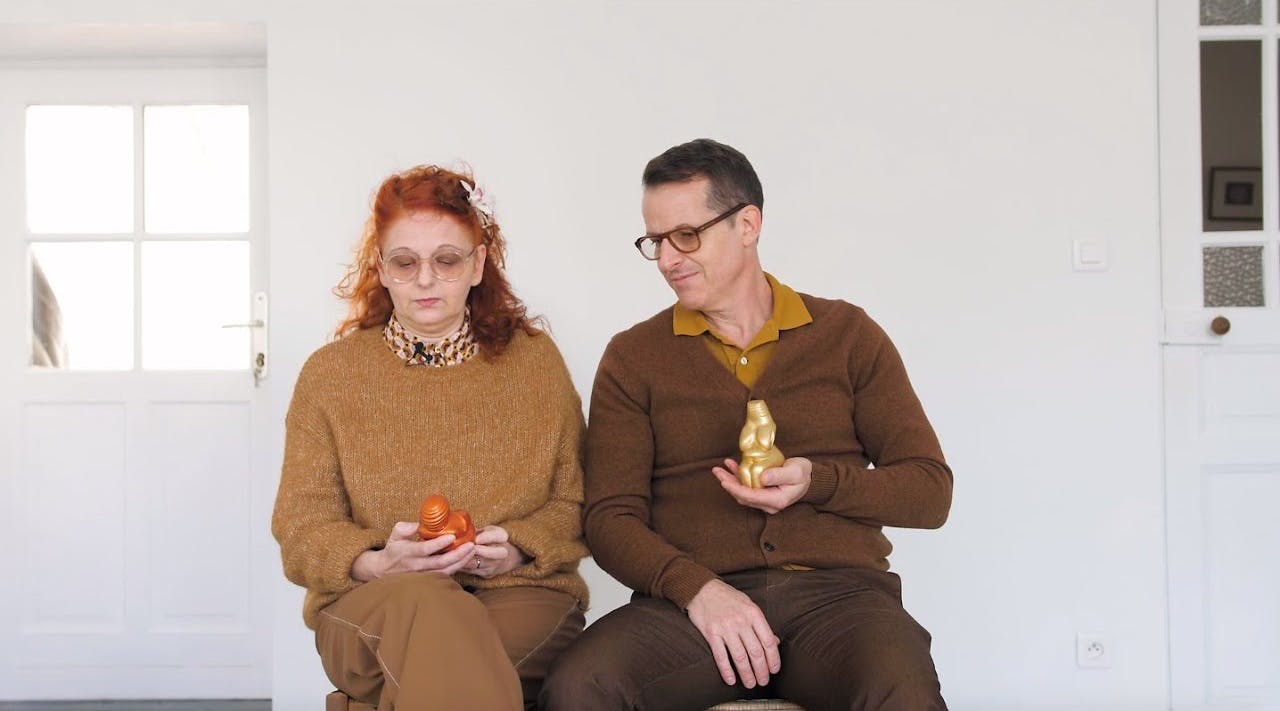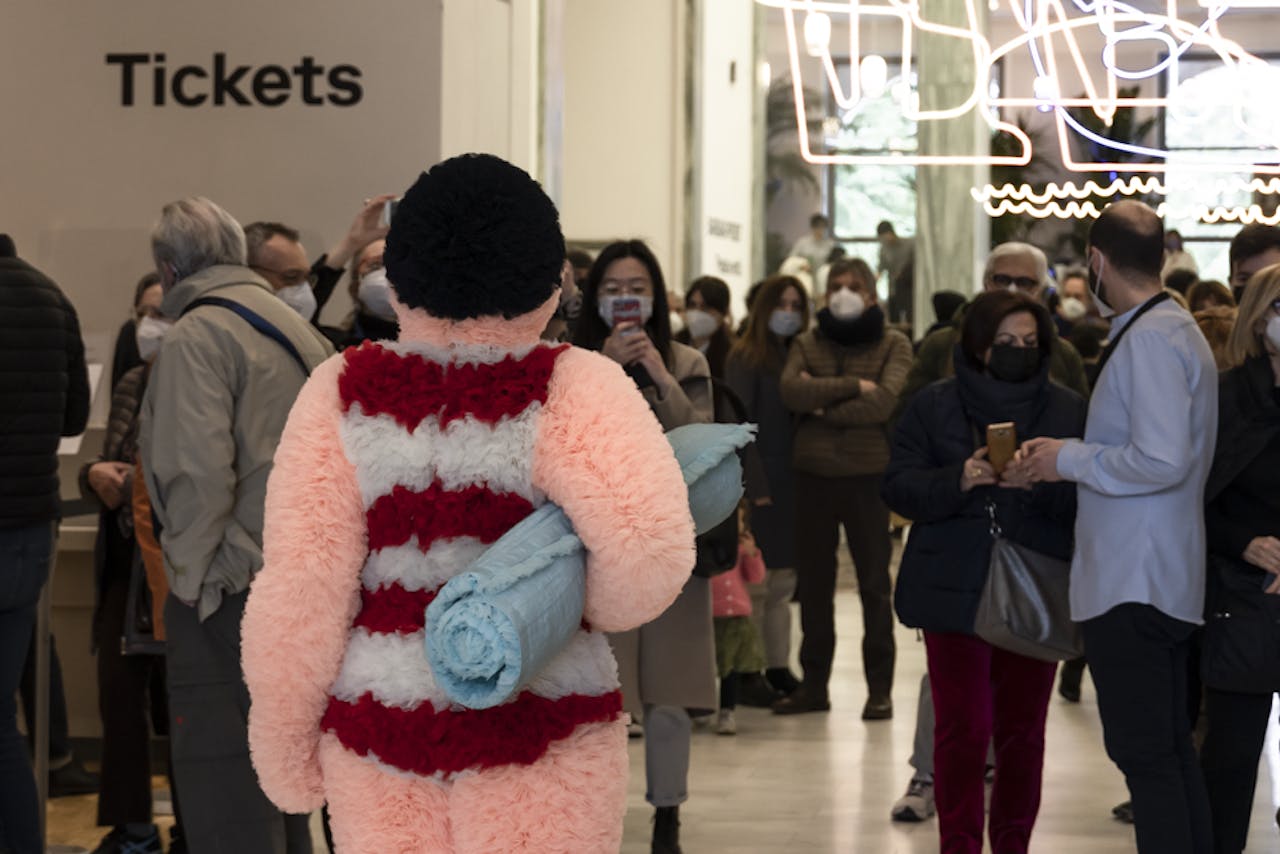
Les baigneurs
Clédat & Petitpierre
Italian Premiere

Ph. Lorenza Daverio, Ginevra Piccinin © Triennale Milano
During the fifth edition of FOG, on 2 and 3 April 2022, the visionary French artistic duo Clédat & Petitpierre brought a bizarre performance to the Triennale, centred around one of the quintessential subjects of modern painting: bathers.
Video: Stefano Conca Bonizzoni © Triennale Milano
We had the pleasure of interviewing this inseparable artistic double act, made up of Yvan Clédat and Coco Petitpierre. The pair – who met in 1986 – are sculptors, performers and directors. Through their works, they question both the exhibition space of the museum and the performance space of the theatre. Their works – proteiform and inventive creations in which the two artists’ bodies are continually put into play – are presented at art centres, museums, festivals and theatres, both in France and abroad.

How did Les baigneurs project come about and why did you choose to draw inspiration from the world of bathers?
The project is the result of a commission from a museum (located on the shores of Lake Geneva) for a summer exhibition dedicated to the theme of “bathing”. Our response to this proposal was conceptually very simple, almost to the point of stupidity. But as in the case of all the works in which we’re physically involved, the subject is ultimately of little importance. The real subject is love: what does it mean to be a couple, together, faced with the immensity of everything around us? How fragile is all of that, condemned to catastrophe by the disappearance of the other? Our bathers in tulle have simple pleasures: their little world boils down to two towels as blue as the sea and a ball as yellow as the sun. They pose, look at the sun in the sky, move their towels a little, lie down again, do sport (very little) and kiss (often).
Who are your “bathers” of reference and what is your relationship with figurative art? Which artists have influenced you the most?
Our main reference point is the painting Baigneuses et baigneurs by Pablo Picasso, but also the figures painted by Fernand Léger (their rotundity and stripes). We’re accustomed to choosing subjects that are not really what they seem. We have nothing to say about this particular “bathing”, any more than we have anything to say about Zéro degré’s Christmas tree decoration or Helvet Underground’s Swiss cuckoo clock. This decision is clearly a way of getting rid of meaning in order to focus on what is at the heart of our work: the relationship between the living and the sculptural.
In the age of digital technology, the metaverse and virtual reality, what are the specifics and strengths of performance?
The beauty of life is that it is fundamentally irreducible and irreplaceable. At least for the moment. And even if technology changes the way we live – shaping our perception of the space we live in – it seems to us that nothing changes with respect to what we can experience in the presence of the other or in relation to the interplay between the stage and the audience. Disappearing in our costumes does not in any way mean erasing the human being, quite the opposite. It is an act of celebration through that powerful animistic reflex that drives us to create meaning, to give feelings to any moving object.

The relationship and interaction with the spaces and the public are central to this type of work. How do you approach these dimensions?
We create performances for museums and public spaces, but we also produce stage shows. Each individual space influences the perception of the work in its own way. For example, the public space is often hostile: too much noise, too much agitation, too much dispersion, too much cohabitation. The preciousness of our objects, their precision, their “sharpness” (as well as the temporal nature of performances), are also a way of escaping these complicated spaces. In the public space we’re often concerned about slowing down the actions and limiting the information transmitted. We try to create a very subtle contrast effect, as if we were an image, blurring everything around us. The black box of the theatre – with its ritual of presentation and a seated, captive audience that has paid to see a work – is a radically different experience. It generates an expectation among the audience, to which one chooses whether or not to respond, but which cannot be ignored.
For two multifaceted and multidisciplinary artists like yourselves, what is the point of contact between sculpture, theatre and performance?
For us everything is connected, and at the same time each language or medium has specific requirements. Our link with sculpture is very strong, but so is our link with the living world. We make everything ourselves, including the objects for the stage. We absolutely have to love these objects (obviously including the costumes), whatever their purpose. We like to master manufacturing techniques and the time we spend on them is often unreasonable, especially when it comes to props. But do we really rely on this plastic autonomy of the objects we create in order to invent the actions of our performances or to conceive the dramaturgy of our shows? Just like the performers’ bodies, these objects have something to tell us. Things that absolutely have to be listened to, even if they’re silent. We feel as if we belong to this “toing and froing” between the living and the sculptural.